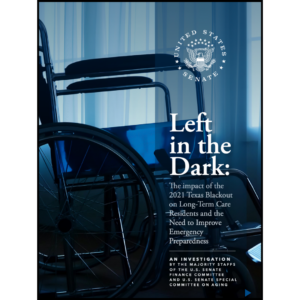Using digital signage to build community
Digital signage is a technology that has roots in the earliest days of TV-some would argue, all the way back to radio. It delivers community news and local content. Even today, many local community cable channels spend a great deal of their broadcast day showing “slides” of upcoming events, essentially cable-based digital signage.
In some ways, digital signage is an old technology-but in others, it is truly state-of-the-art. The huge screens that you see at sports arenas and stadiums are digital signs. The famous sign at Times Square, even though it dates back to Guy Lombardo, is a digital screen, among the more high-profile examples.
But the real breakthrough, the breakthrough that makes digital signs practical for many small, more targeted applications, is the tremendous decrease in cost that has occurred in recent years. Technology breakthroughs have continued to decrease costs while increasing the size and capabilities of display hardware, especially LCD and plasma TVs. Networking and software have also dramatically evolved to make digital signs affordable for small businesses, including long-term living communities.
What is digital signage?
Digital signage really boils down to any visual distribution network that carries information to a specific audience-employees, customers, visitors or, in the case of long-term living facilities, residents. Until recently, the signage system consisted of a proprietary server and a dedicated network hooked up to traditional televisions (the ones with tubes). Installation and maintenance costs were steep. Also, the content was often managed by a service provider, so if you wanted to update what you were showing, you would have to contact the service provider, submit the change, and wait days for the update (and, of course, pay for the privilege).
Today, the network is often the Internet. If you have an Internet connection, you have the backbone for a powerful digital signage system. If it’s a standard DSL or cable high-speed Internet connection-typical in businesses-you won’t even have to upgrade. The displays are typically LCD or plasma flat screens, which are not cheap but have come down in price substantially, and the “server,” which is an off-the-shelf personal computer. A lot of this equipment can be “repurposed”-that is, moved from other applications for use with the digital signage system.
The real innovation (and cost savings) comes from how digital signage systems are administered. Today’s signage providers offer Web-based portals where one can update and manage one’s own content. Gone are the days when one had to contact and pay an outside provider and then wait, sometimes for weeks, for the changes to be made. Now, any authorized administrator in your organization-a receptionist, secretary, marketing or activities director, or anyone else-can log onto your digital signage console over the Internet and manage the slides. The updates are instantly transmitted over the Internet to all of your signage screens with the click of a mouse. Changes can be made every day, and it doesn’t cost anything extra.
So, what does it cost? These new services are typically sold as subscriptions starting at less than $1,000/year and, as mentioned earlier, the equipment is pretty much off the shelf, so it, too, is inexpensive. Digital signage displays showing the same or slightly different content in new locations can easily be added without having to completely redeploy the system every time.
Why long-term care?
Why do digital signs make sense for long-term living facilities? Walk around. Baby boomers (and beyond) are literally tuned into television. It seems that TVs are on all the time and that is how we are used to getting information. People instinctively turn to television for news, weather, and entertainment. The challenge is to present information about your community that is attractive and informative and fits into the sophisticated media mix that they have become accustomed to.
As long-term care facility administrators, you have a lot to say to your residents, and you generally use a number of traditional “media” such as whiteboards, printed monthly, weekly, and daily schedules, posters, and other notices posted in public areas. These all work at some level but are time-consuming to update and distribute. It is also difficult to quickly update notices, gradually change the emphasis as events approach and, just as importantly, remove the notices when the time comes.
Cases
Let’s look at how digital signage can be applied at four different types of communities.
Nursing homes. Nursing homes generally list their daily activities but, because of the upkeep, they only post weekly, or more likely, monthly charts listing the activities. These schedules often become part of the “wallpaper” and are seldom noticed. They can be replaced or augmented by digital signage displays (flat screen TVs) in the dining, activities, and therapy rooms. The type can be bigger than it is in regular notices, and you can control the dwell time of each page so everyone has the time to read the news.
In addition to highlighting the day’s events, it’s easy to promote special events and feature the next event, even having a countdown to the start of the activity. Imagine a bold screen that highlights the day’s movie or visiting entertainer, or even the next bingo game. Since you control the digital signage, you could even welcome a visiting relative or a VIP business visitor at the hour that they are expected!
Other whiteboard items, such as the day’s weather and upcoming holidays, as well as photos of residents participating in activities, can also be an eye-catching part of the mix.
Most residents have televisions in their rooms that show cable network programming. If that’s the case, and if the cable is routed through a central switch in the facility, you can add your digital signage to the channel selection so residents can tune in to see the same information from their rooms.
Another optional use for digital signage is to communicate with families who are interested in what’s happening at the nursing home and how, or at least when, they can participate. In addition to reaching them through your normal network when they visit, some systems allow you to show the digital signage as a window on your Web site. That way, families can view the day’s activities to see what’s available with no additional effort on your part. The digital sign on the Web is instantly and automatically updated as the signage is changed-no complicated Web design, no separate step.
Assisted and independent living facilities. These facilities are also fertile ground for digital signage. The activities are more numerous and varied, yet there are many more opportunities to informally socialize so the digital signage can reach a wider audience through strategic placement in the game rooms, dining areas, lobbies, and sitting areas. You can even carry special programming on different screens. For instance, your chef can quickly and easily update the digital signage menu board at the dining rooms to show each day’s menu. In some cases, distribution over the cable network is technically feasible and can be effective.
Extending digital signage to computers can be a powerful communications extension, not only for families, but also for the residents themselves. More and more seniors are computer savvy and are comfortable e-mailing and searching for information over the Web. It can be convenient for them to log onto your Web site, or even a private internal Web site, to view a community billboard, to see pictures of past events or to plan future activities. A few digital signage providers offer their digital signs as screensavers. Interested residents and families can install a small utility on their computers so that their computer’s screensaver actually shows the digital signage information that is being displayed on your public screens. It helps build a sense of community and increases resident satisfaction and involvement.
That leads us to another benefit of digital signs: They are great marketing tools. Almost nothing gets bought these days without an Internet search. You can be assured that prospective residents and their families are checking you out on the Web before they pick up the phone to make an appointment. By featuring your facility, your activities, and your residents through a digital sign on your Web page, you can differentiate yourself from the competition. Digital signage also provides an opportunity to earn advertising revenue or to show your community involvement by providing content from other companies and organizations on the signage network.
Residential communities. Different types of residential communities, less structured but active, also present opportunities for digital signage communications. These include:
Retirement communities. In addition to robust activities schedules, the communications mix at retirement communities typically takes the form of newsletters, posters, and other print communications. Digital signage can be an effective extension by offering a “new media” way to reach residents. As you’d expect, retirement communities would rely on a mix of public digital signage displays, including displays in recreation areas such as pools and sports complexes, as well as access over the Web and screensaver displays. One major difference for retirement communities is that there is often staff assigned to creatively develop and internally market resident activities to create community and to compete effectively in the market.
Over-55 communities. These are the least structured yet offer the same communications activities. The difference here is that boards of directors and the residents themselves often share responsibility for community communications. Here, digital signs can be effective because they are easy to update and maintain and the Web portal is intuitive and it lends itself to being updated and maintained by volunteers. An Internet-based digital sign can easily be updated by several authorized users simply by logging on to the digital signage service over the Web and through their screensavers.
Just makes sense
It’s obvious that I’m a proponent of digital signs. But when you think about it, it makes sense to keep in step with the times, and digital signage can help you reinforce your communications no matter what type of facility you are administering. You can build community, raise the involvement of the residents, and market your facility to a wider community, all the while expanding your brand recognition and business opportunities in a very contemporary way.
For further information, phone (715) 833-9501, fax (715) 833-9502, email info@strandvision.com, or visit https://www.strandvision.com. To send your comments to the editor, please e-mail mhrehocik@iadvanceseniorcare.com.
Related Articles
Topics: Articles , Operations











